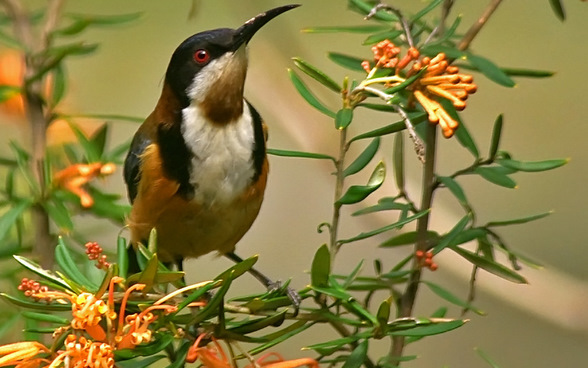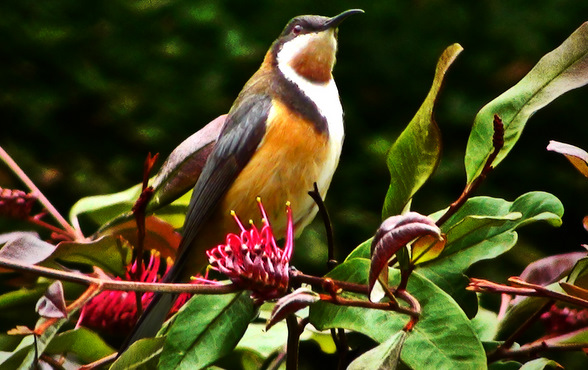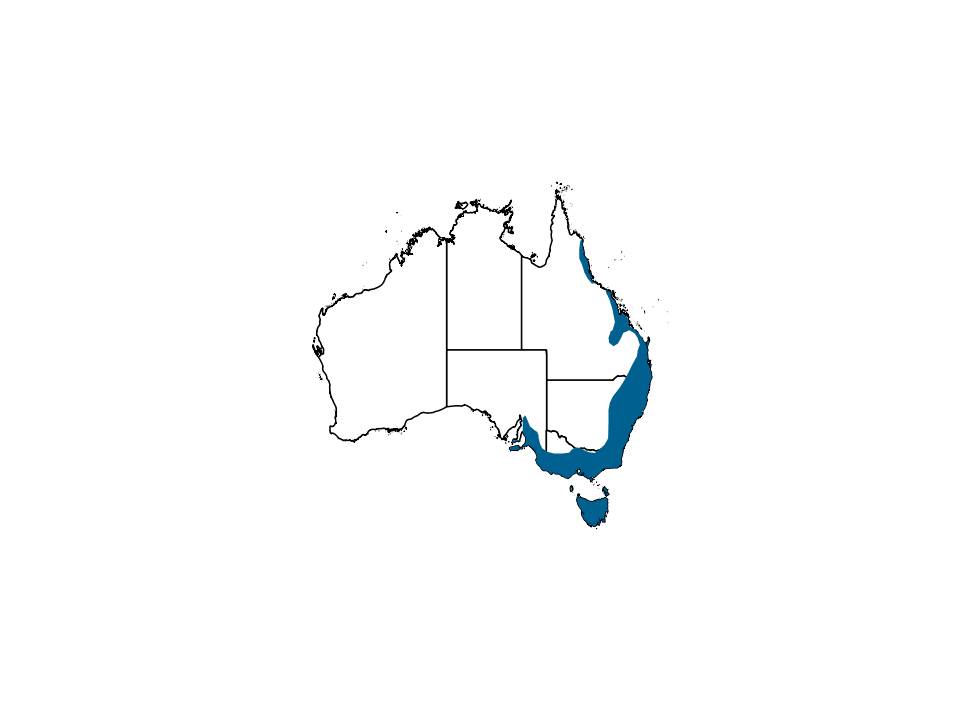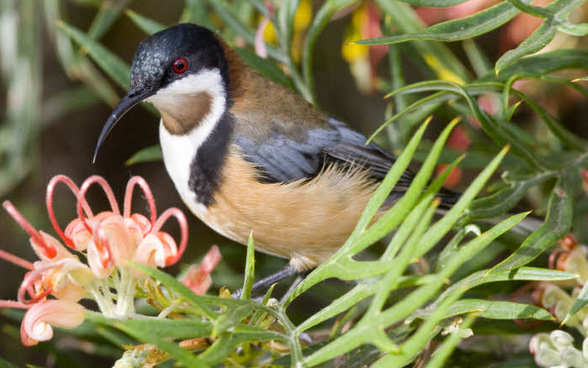Size
13 - 16 cm long (from head to tail)
Behaviour
Call
A short, repetitive, high-pitched piping. During flight it twitters.
Diet
Insects and nectar from a wide variety of flowers including grevilleas, epacrids (heaths) and other flowering shrubs. It extracts the nectar while perched or hovering.
Flight
Energetic - fast and erratic.
Movement
It remains in some areas throughout the year, sometimes with local movements. In other areas it occurs seasonally, often descending from higher altitudes to spend autumn and winter in lowland areas to escape the winter chill, and then returning to the hills in spring.
Breeding
Both sexes collect nesting material, but only the female builds the nest, which is small and cup-shaped, made from twigs, grass and bark, and lined with hair and spider's web. She then lays two eggs which she incubates for about 14 days. Both parents feed the young for a further 14 days.
Field Guide
Improve your identification skills. Download your Eastern Spinebill field guide here!





